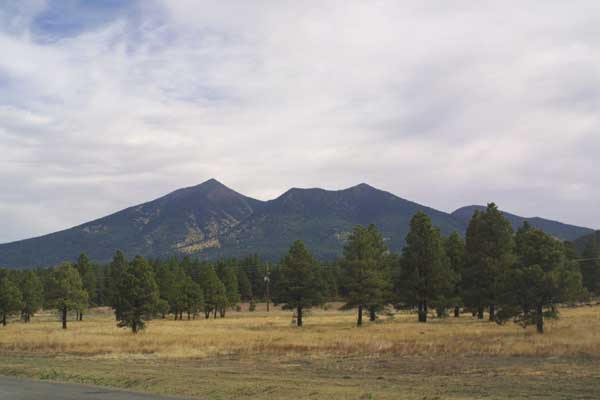
|
Coming down out of the San Francisco's after leaving Flagstaff. |
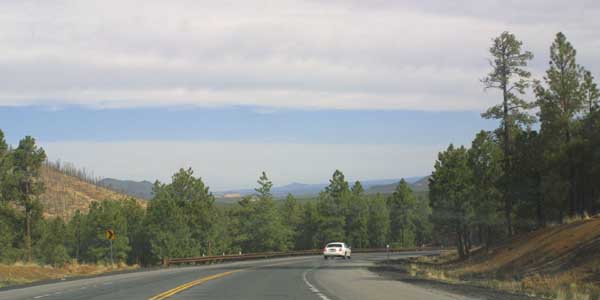
|
We are descending through pine forests onto the plain in which the
Grand Canyon is cut. It is a journey of a few hours, but it brings many changes. |
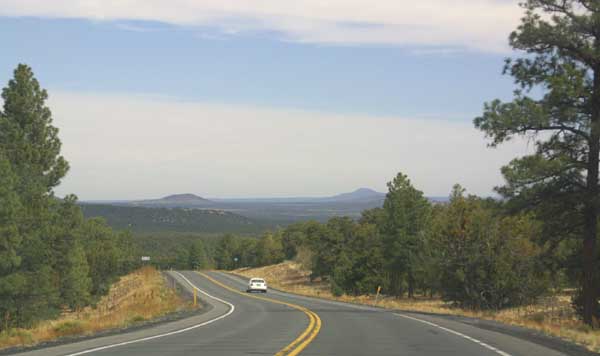
|
As the plain opens up before us, we see a few low peaks. Off in the
distance, we may even be looking at the north rim of the canyon, though
it is hard to tell for certain. |
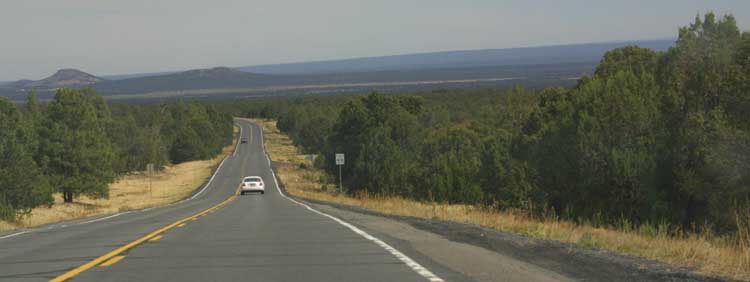
|

|
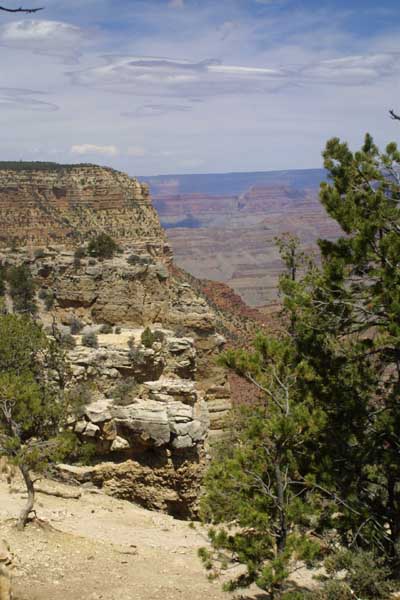
|
My first view of the Grand Canyon, appropriately under mystical skies. |
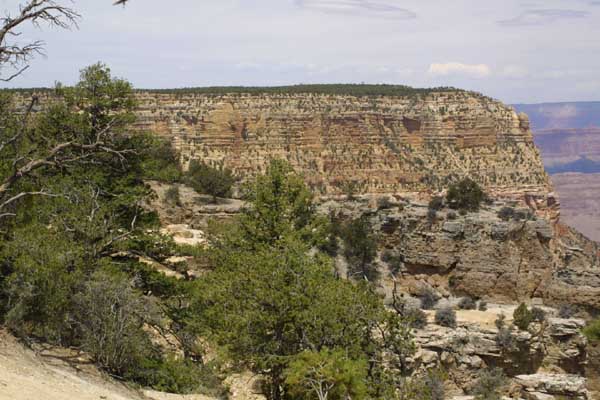
|
Bluffs, palisades, and sheer drops are everywhere here. So is more
geology than most people are able to digest in the (according to the park
service) average 6 hour visit. |
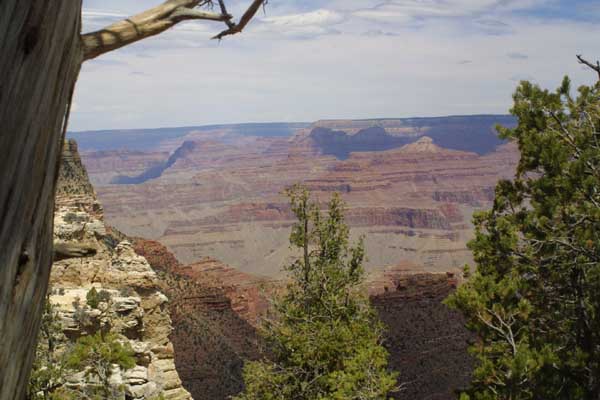
|
A look out across the million year landscape of the Grand Canyon. |

|
I had always considered this to be a very dry place (which it is),
but there was a considerable amount of plant and animal life, all through
the park. In many cases bushes and small trees grew right up to the cliff's
edge and beyond. |
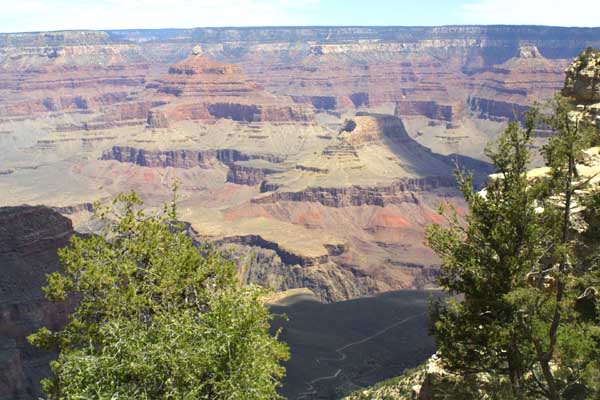
|
A stereotypical view of the canyon, full of reds, browns, and grays. |
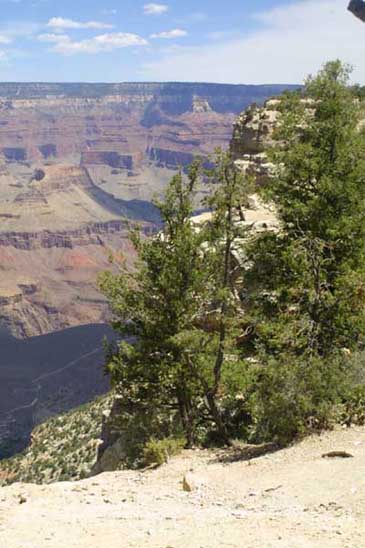
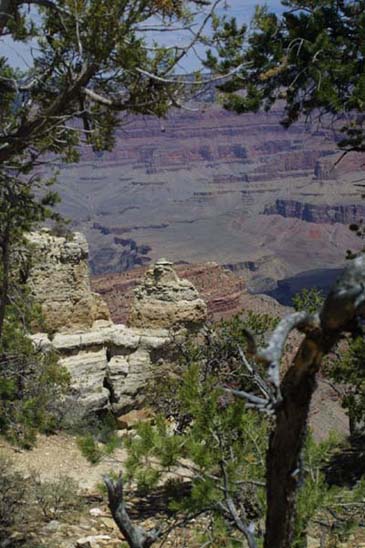
|
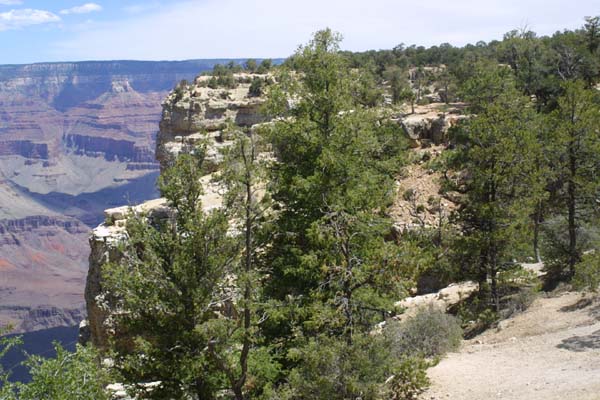
|
Fascinating spires, and columns edge the canyon, while curves, angles,
and rough cut channels fill it's center. |
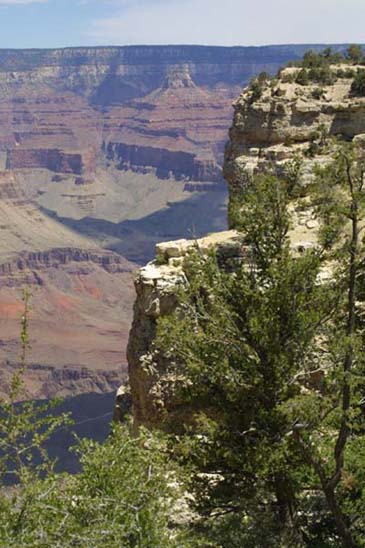

|
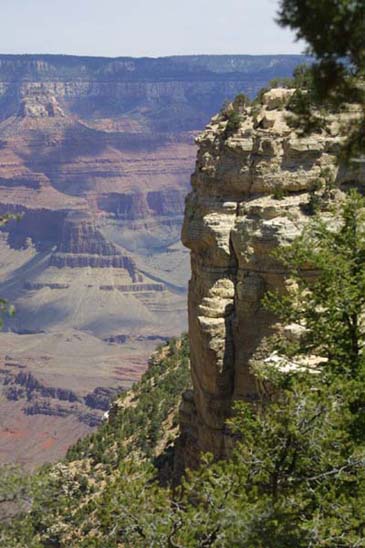
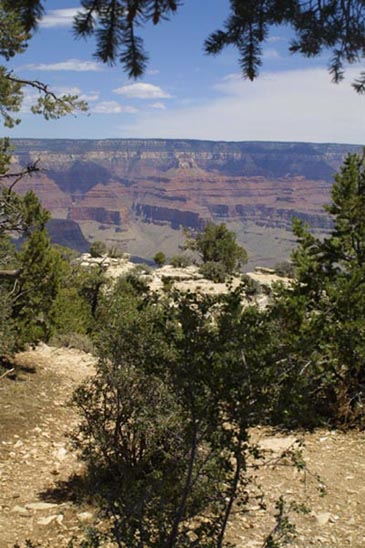
|
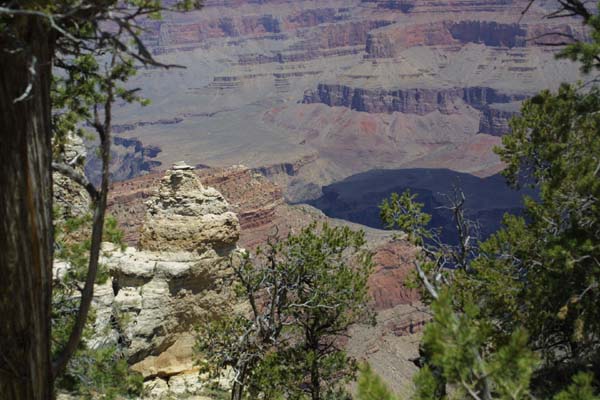
|
More plant life than I expected, up on the rim. Down below, however,
it is obviously a different story. Little vegetation can be seen on the
floor, or the lower slopes of the canyon. |
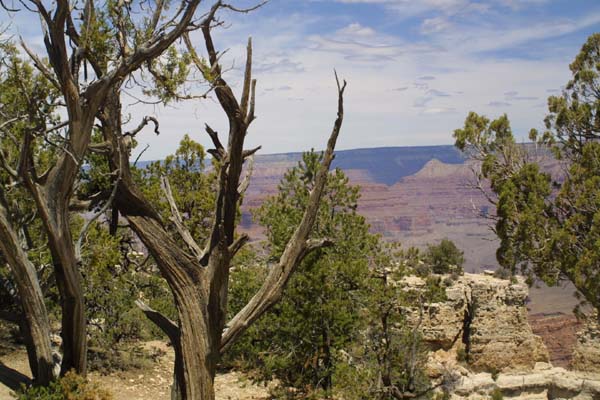
|
Twisted, and often barren trees, show the effects of the blazing sun.
The heat and dry air of the place can leave living trees with a smaller
moisture content than milled lumber. |

|
Even on the sloping sides of some of the cliffs, bushes, and stunted
trees grasp for a foothold. Life is not easy here, for anything. |
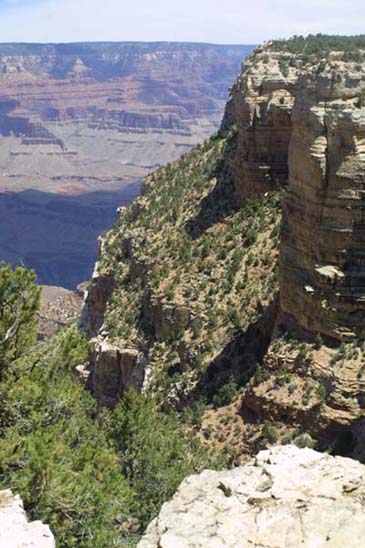
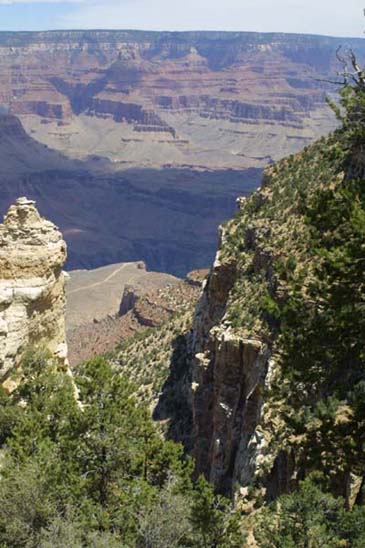
|

|
If the lack of water is a threat to the area's specially adapted life,
then the persistent action of what little water there is, threatens the
rock itself, wearing it away relentlessly over thousands of years. |
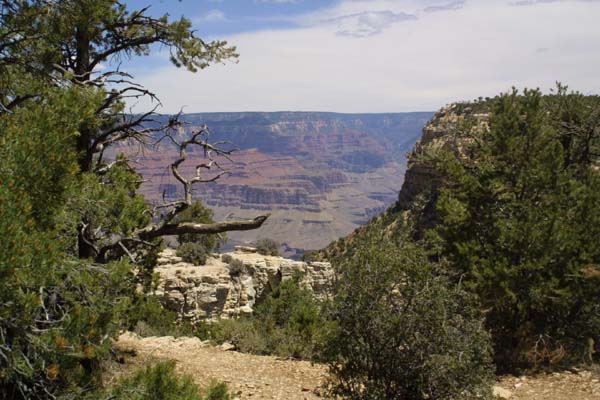
|
A view through two results of the action of water. The first is the
plant life it supports, while the second is the canyon it has carved. |